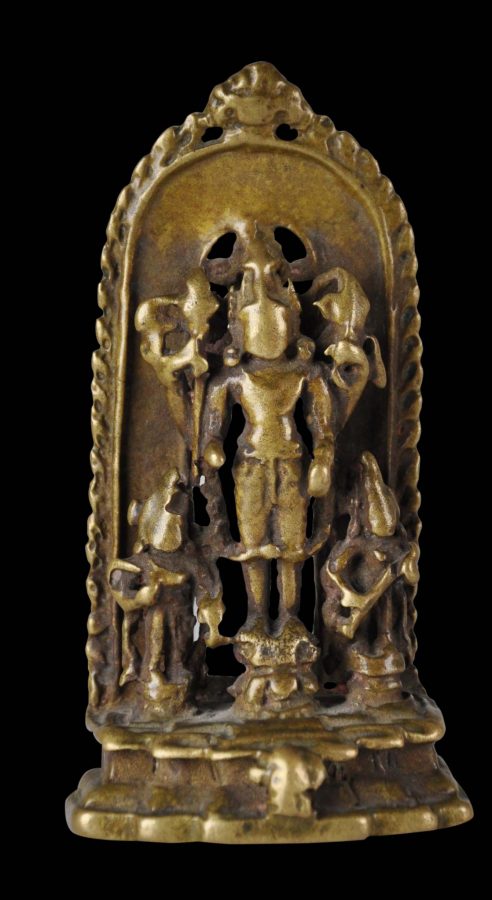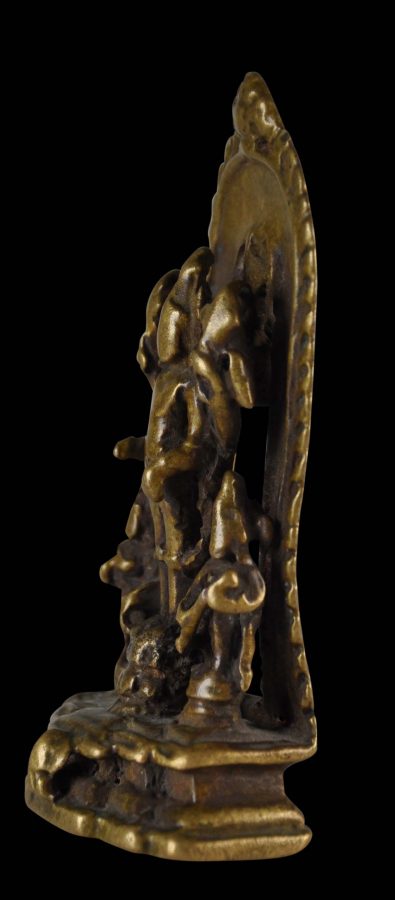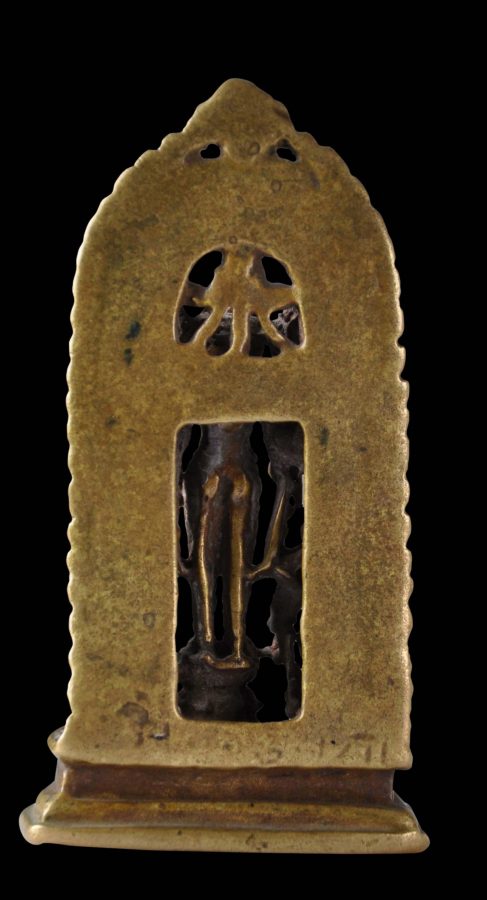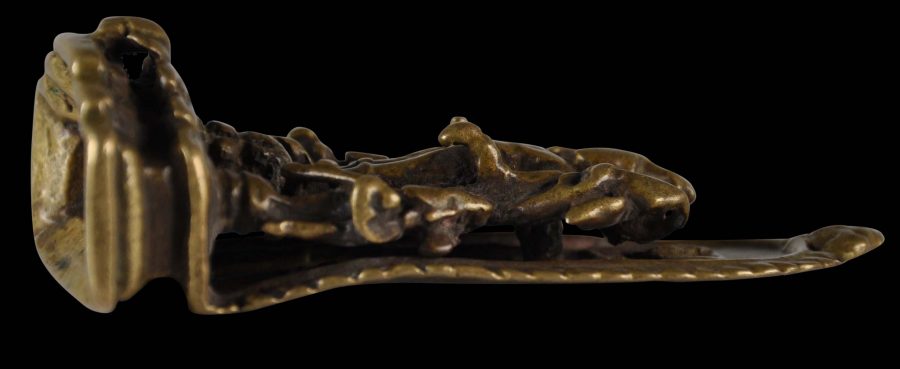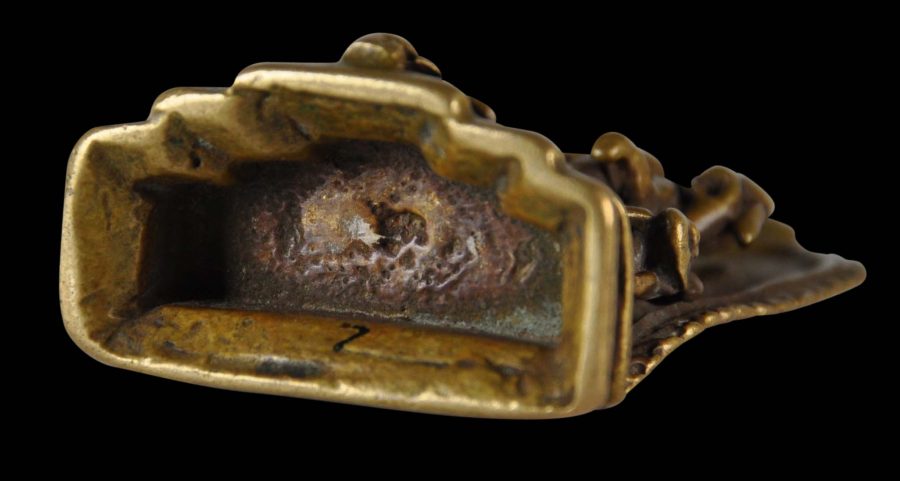This beautiful, small shrine of Vishnu and his retinue show the deity in a particular composition and stance that was popular in ancient Bengal (Pal, 2003, p. 197). It shows a four-armed Vishnu standing on a double lotus pedestal on a tiered platform. Vishnu holds a club and a lotus in his upper arms, and is flanked by his two spouses, Sri and Pushti as Saraswati. Sri probably is holding a lotus and Pushti is holding a vina (musical instrument). Both goddesses also stand on lotus dais.
The group is backed by a pierced aureole edged with a flaming border.
The group has been cast in bronze as a single piece. It dates to the 11th or 12 centuries and is in typical Bengal style.
A worn, engraved Devanagari inscription is on the reverse.
The Pala dynasty was a Late Classical Period power centred on and around Bengal from the 8th to the 12 centuries. They were known for their liking of art, architecture and public works and were seen as relatively astute and enlightened rulers. The ruling family itself were Buddhists but Hinduism also flourished under their rule.
The shrine has ample puja (ritual prayer wear). Its contours have been softened by age and use. It has a fine, golden patina. There are no cracks, losses (other than wear) or repairs.
References
Pal, P., Art from the Indian Subcontinent: Asian Art at the Norton Simon Museum, Yale University Press, 2003.


